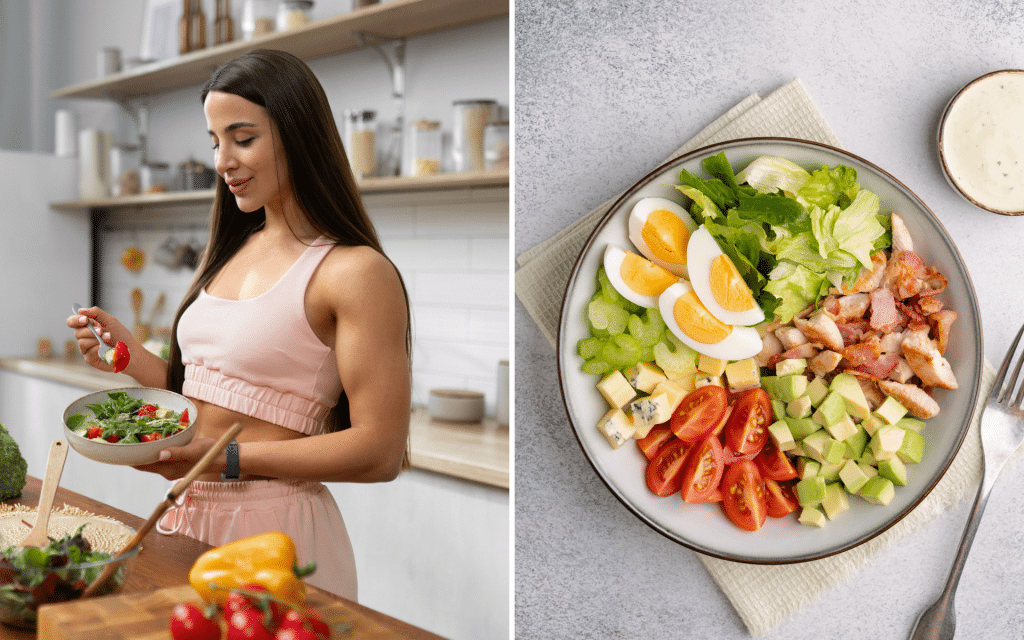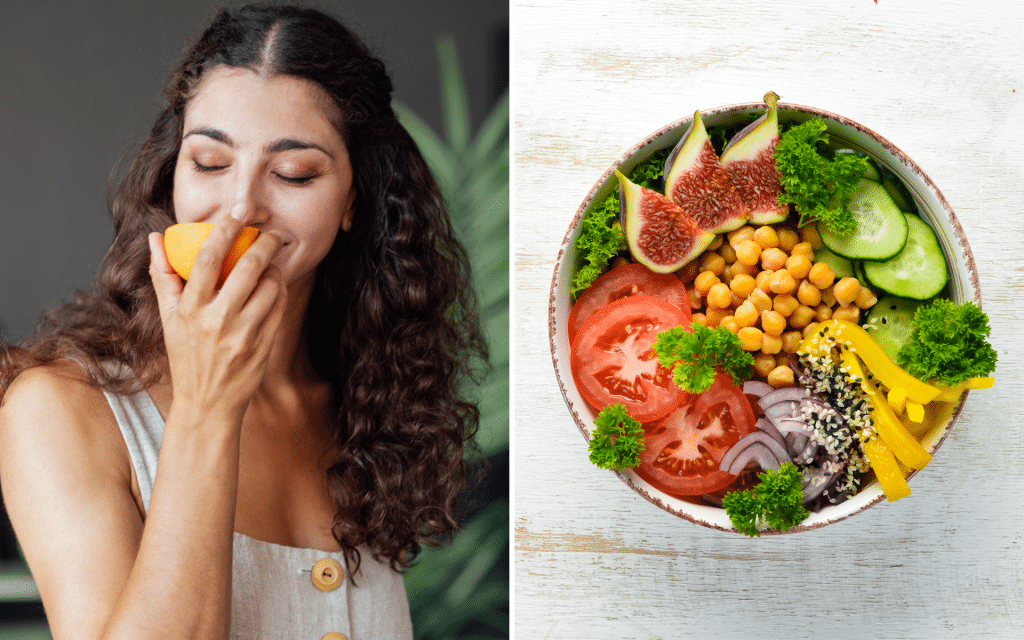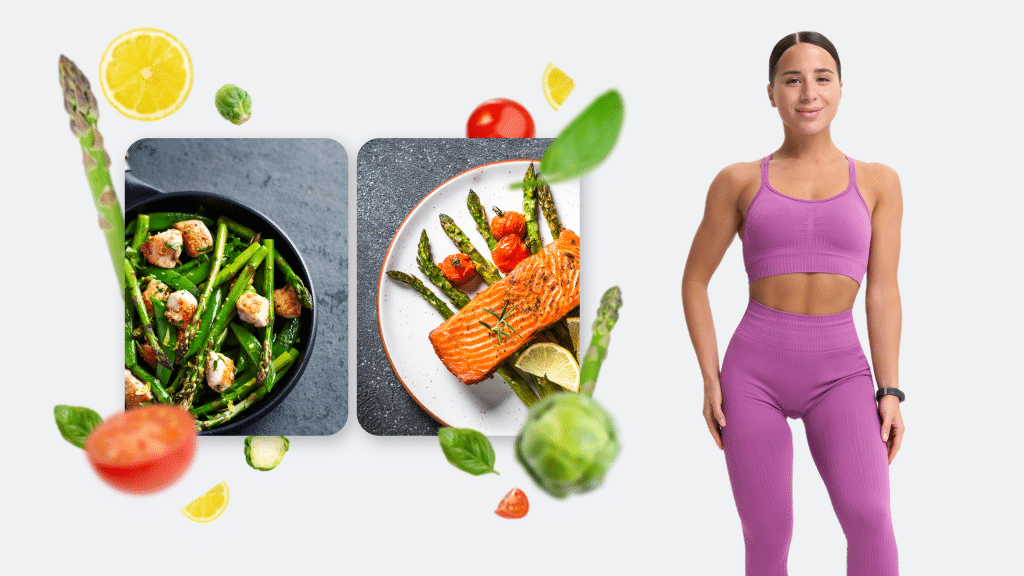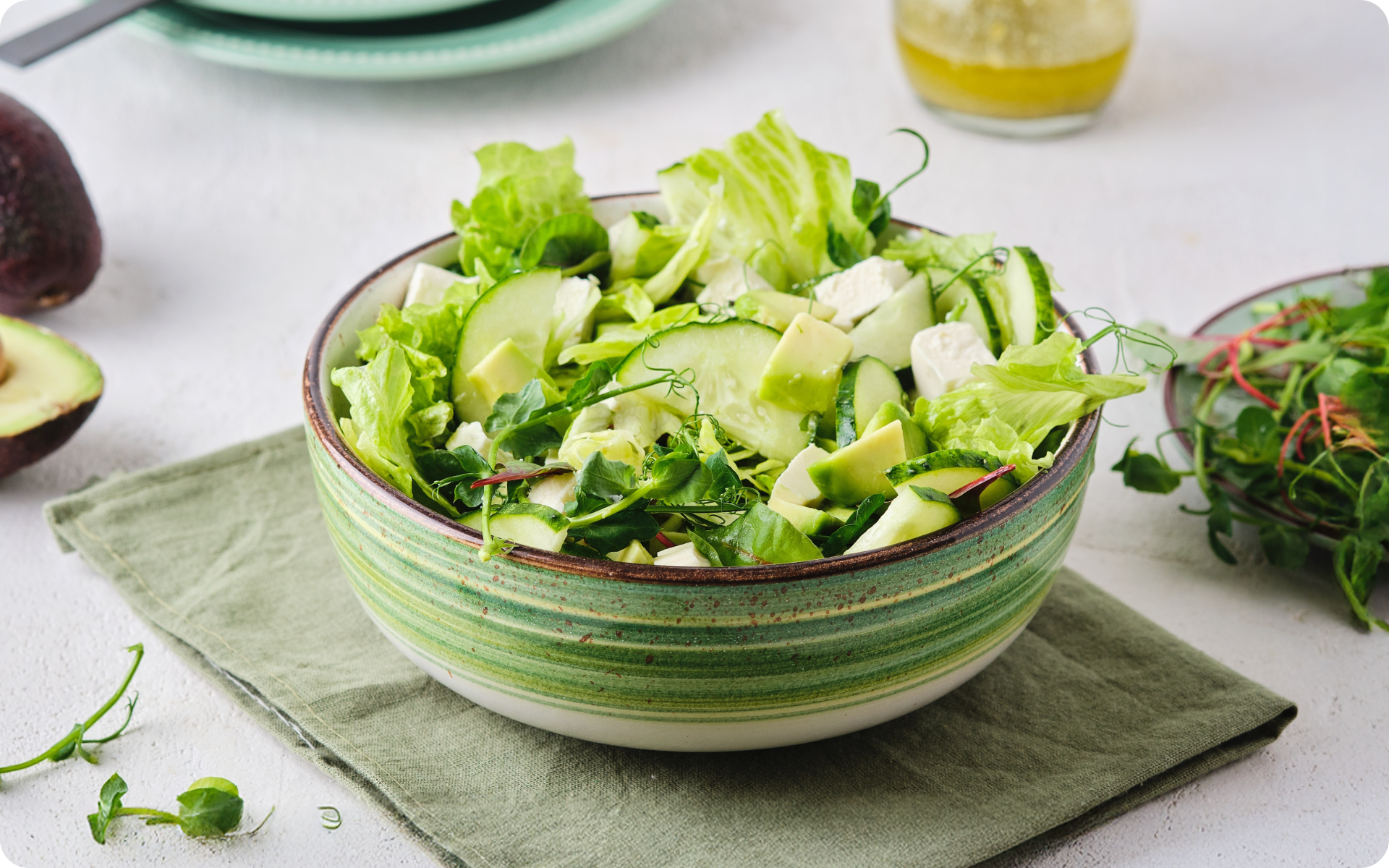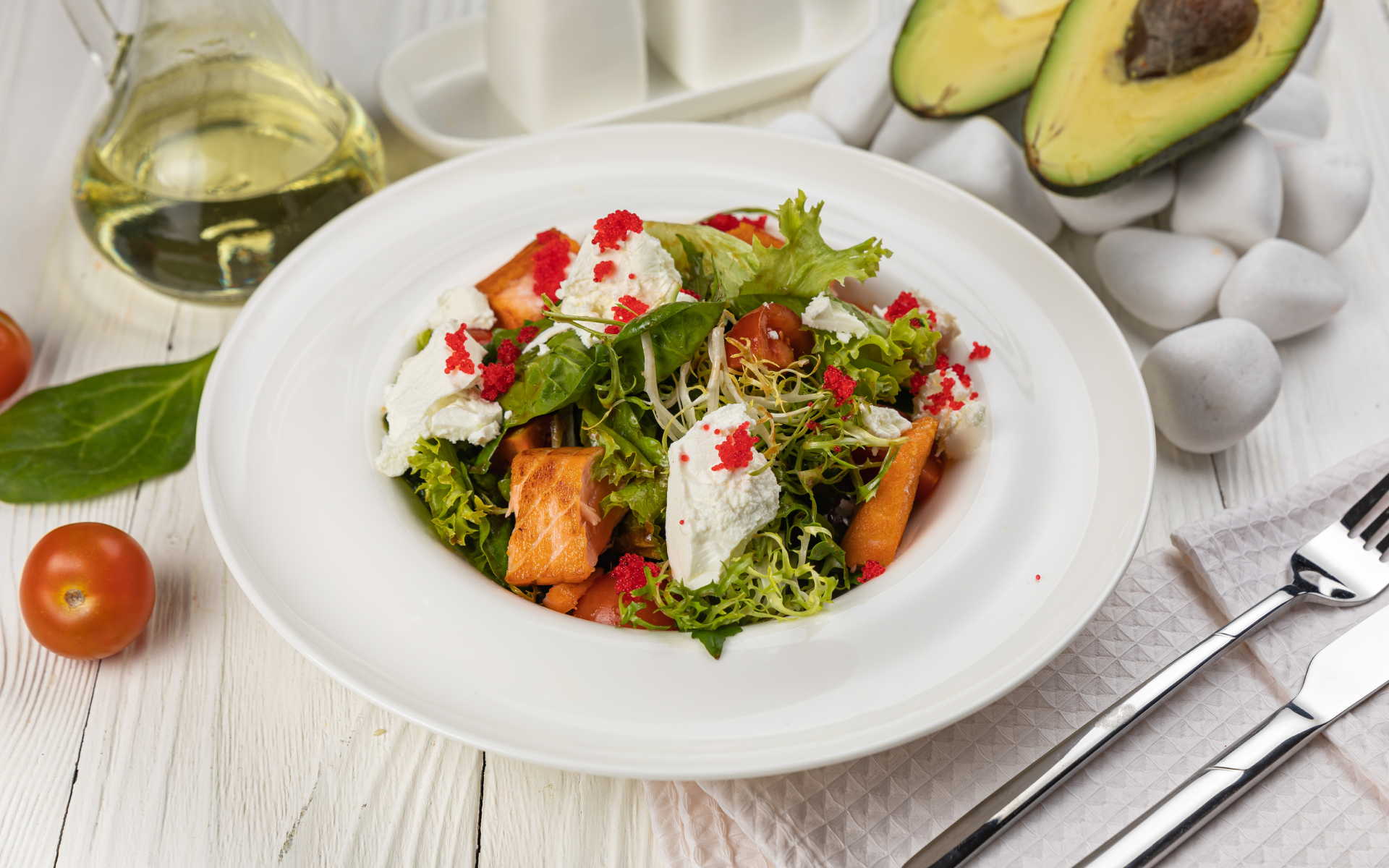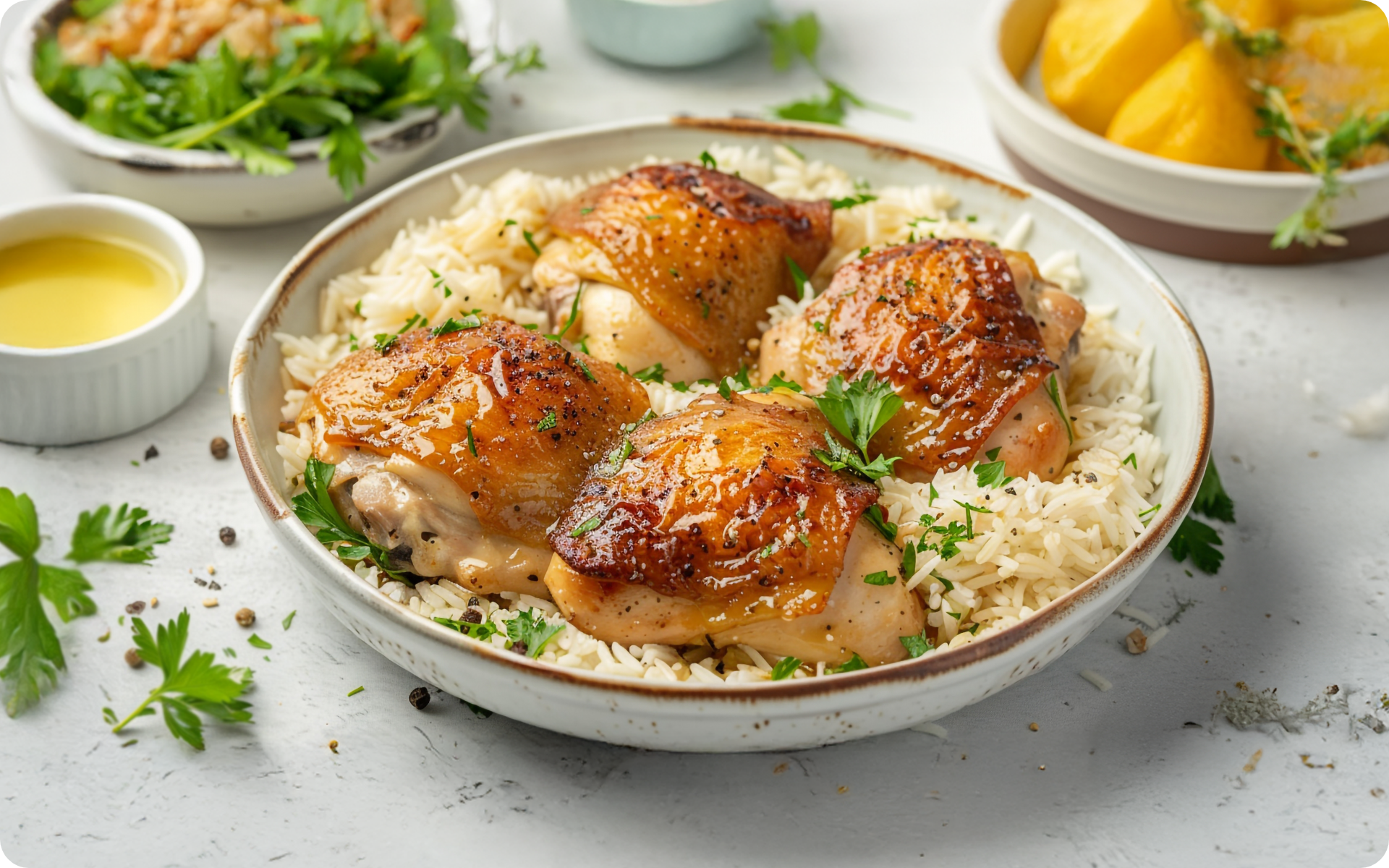Keto is one of the most popular diets of our time. Its most common use is for weight loss, as many people believe it boosts fat breakdown while suppressing appetite. When it leads to weight loss, the diet has shown promise in managing some chronic, lifestyle-related diseases (1).
What isn’t talked about enough is how costly it can be to maintain a keto diet.
High-quality proteins (such as grass-fed beef, wild-caught fish, and free-range eggs) and healthy fats (avocados, nuts, olive oil) can be more expensive than high-carb staples such as bread, rice, or pasta.
If you rely on keto-specific products such as low-carb bread, prepackaged snacks, or sugar-free sweeteners, you may end up spending a fortune on groceries.
So how can you maintain a keto lifestyle without breaking the bank? We share some budget-friendly tips to help you stay on track with your keto goals in 2025.
What Is the Most Effective Way of Cooking Keto?
The most effective way to cook keto meals when you’re on a budget is to plan your meals and cook in batches using affordable staples such as eggs, ground meats, and seasonal vegetables.
Keto can appear costly due to premium ingredient suggestions such as grass-fed meats and organic vegetables. However, budget-friendly options such as regular eggs, canned fish, and frozen vegetables can make the diet affordable without sacrificing nutritional benefits.
This approach minimizes waste, maximizes the use of cost-effective ingredients, and reduces the reliance on expensive, processed keto products.
Can You Cook Keto Meals on a Budget?
Cooking keto meals on a budget is entirely achievable with a little planning and smart ingredient swaps. The disparity between premium and budget options in terms of true nutritional loss is surprisingly small, which means you can maintain a healthy, effective keto diet without overspending.
Here’s how popular keto ingredients stack up in terms of cost and nutrition:
1. Protein Choices
Premium Option: Grass-fed beef and wild-caught fish
Grass-fed beef and wild-caught fish are keto gold standards that are known for their higher omega-3 fatty acid content, possibly improved nutrient profiles, and environmental sustainability.
For example, grass-fed beef is believed to contain more vitamin E and antioxidants than grain-fed meat (2). However, the price reflects these benefits, with grass-fed beef costing $8-$12 per pound, which is double or even triple the price of conventional beef.
Budget Alternative: Regular ground beef, canned tuna, and chicken thighs
Affordable options such as regular ground beef, chicken thighs, canned tuna, and eggs provide excellent sources of protein without the hefty price tag. You can also stock up when meat is on promotion and freeze any you don’t need right away.
While omega-3 content may not be as high as in grass-fed or wild-caught options, these alternatives are still rich in essential amino acids and fats that are essential to the keto diet.
Eggs are among the most economical sources of protein and include high-quality nutrients such as choline and vitamin D at roughly $2 per dozen (3).
The Trade-Off:
Although premium proteins offer extra omega-3s and antioxidants, their budget-friendly counterparts still deliver core keto benefits such as ketosis support and satiety.
To balance this trade-off, you can supplement omega-3 intake with budget options such as flaxseeds, walnuts, or cod liver oil, which significantly reduces your overall costs.
Verdict: For keto on a budget, regular proteins are sufficient, with minimal nutritional penalties.
BetterMe: Health Coaching app is a foolproof way to go from zero to a weight loss hero in a safe and sustainable way! What are you waiting for? Start transforming your body now!
2. Healthy Fats
Premium Option: Avocados, extra virgin olive oil, and MCT oil
Premium fats such as avocados and olive oil enhance the diet with monounsaturated fats, antioxidants such as polyphenols, and heart-boosting effects (4, 5)
For example, avocados are loaded with potassium – a crucial electrolyte in keto – but their prices add up quickly at $1-$2 each. Similarly, MCT oil, which is valued for its quick boost of ketones, costs $20-$30 monthly.
Budget Alternative: Canola and other vegetable oils
Canola and other vegetable oils are heart-healthy and widely available, contributing to ketosis without the premium cost. Coconut oil, while slightly more expensive, offers medium-chain triglycerides (MCTs) naturally (6), which makes it a practical substitute for processed MCT oil. However, coconut oil is high in saturated fats, so you should use it in moderation.
The Trade-Off:
Avocados and MCT oil provide added benefits such as vitamin E and phytonutrients, but budget-friendly fats are just as effective for promoting ketosis and satiety.
You may have heard that “seed oils” such as canola, sunflower, and others are unhealthy, but that couldn’t be further from the truth. Research has consistently shown that they are neutral to beneficial when it comes to inflammation and certainly beneficial for heart health when they replace saturated fats in the diet.
Olive oil, particularly extra virgin olive oil, can be more expensive than other cooking oils such as vegetable or canola oil. Look out for sales and stock up when you can to save money, but don’t hesitate to reach for other vegetable oils if they are more affordable for you.
Verdict: Budget-friendly fats are a viable alternative to premium options, with minimal nutritional compromise.
3. Vegetables
Premium Option: Organic kale, spinach, and Brussels sprouts
Leafy greens such as organic kale and spinach are keto favorites due to their low carb content and high concentrations of vitamins and antioxidants (8). However, organic certification and “superfood” status can drive costs significantly higher, with organic greens priced at $4-$6 per bag.
Budget Alternative: Frozen spinach, cabbage, and seasonal vegetables
Economical options such as frozen spinach and cabbage are excellent substitutes. Frozen spinach retains most of its vitamins and minerals due to quick processing, and cabbage, at roughly $0.60 per pound, is rich in fiber (essential for gut health on keto).
Seasonal vegetables such as zucchini and broccoli, which are often available at a fraction of the organic price, provide a range of nutrients while keeping costs manageable.
The Trade-Off:
While organic produce has the added benefit of being pesticide-free, frozen and conventionally grown vegetables deliver similar micronutrient profiles, particularly when minimally processed. Choosing seasonal produce also ensures you get maximum freshness and nutrients (9).
Verdict: Budget vegetables provide nearly equivalent nutritional value if you incorporate variety and focus on seasonal produce.
4. Snacks and Specialty Items
Premium Option: Keto-branded bars, cookies, and bread
The growing popularity of the keto diet has spurred an influx of branded snacks such as low-carb cookies, protein bars, and keto-friendly bread. Despite their convenience, these snacks often cost significantly more (up to $5 per bar) than their conventional counterparts.
Budget Alternative: Homemade snacks and simple whole foods
Homemade alternatives, such as cheese crisps or almond flour muffins, are more economical and allow you to control ingredients. For example, making zucchini chips or baking your own cookies with coconut flour costs a fraction of store-bought options. Whole foods such as cheese, nuts, or hard-boiled eggs also double as easy, keto-friendly snacks.
The Trade-Off:
Branded snacks offer convenience, but often come at the expense of added preservatives and costs. Homemade snacks and whole foods, on the other hand, deliver better control over nutrition without the price inflation.
Verdict: You’re not missing out nutritionally by skipping branded items and homemade options are just as satisfying.
Read more: Eating Twice a Day: 6 Benefits to Consider for Maximum Results
What Are the Best Keto-Friendly Ingredients for Beginners?
With these staples, you can build a variety of meals that are filling, flavorful, and 100% keto:
Proteins
- Eggs – These are affordable, nutrient-dense, and incredibly versatile. Have them scrambled for breakfast, boiled for on-the-go snacks, or baked into keto-friendly quiches.
- Chicken Thighs – Juicy and flavorful, chicken thighs are cheaper than chicken breasts and provide enough fat for a well-rounded keto meal. They are also very forgiving and don’t dry out as easily as breasts when cooking. Use them roasted, grilled, or shredded into soups and salads.
- Ground Beef or Turkey – These ground meats are an essential budget protein. They work great in burgers, meatballs, chili, or lettuce wraps.
- Canned Tuna or Sardines – Affordable and shelf-stable, these are easy to toss into salads, mix with mayo for a quick spread, or pair with avocado for a satisfying meal.
- Pork Shoulder or Bacon Ends – Pork shoulder is perfect for slow-cooking into pulled pork that stretches over several meals. Bacon ends (often cheaper) are ideal for adding a smoky, rich flavor to dishes.
Fats
- Olive Oil – A pantry must-have, olive oil is heart-healthy, versatile, and perfect for cooking or drizzling over salads and roasted vegetables. A little goes a long way!
- Canola and other vegetable oils – More affordable than olive oil but still heart-healthy, these can be used as your main cooking oils while you save the olive oil for salad dressings and finishing dishes.
- Coconut Oil – Cost-effective and multipurpose, coconut oil works for frying, baking, or even blending into coffee for a keto-friendly boost. It’s high in saturated fats, so you should use it in moderation.
- Cheese (Cheddar or Mozzarella) – Affordable block cheeses can be shredded for casseroles, melted over vegetables, or eaten as a snack. Cheese is also high in saturated fat, so moderation is the key.
Low-Carb Vegetables
- Zucchini – This adaptable vegetable can make zoodles, chips, or casseroles. It’s also excellent for stir-fries or grilling.
- Cauliflower – A true keto superstar, cauliflower can be mashed, riced, roasted, or turned into a pizza crust. It’s filling and widely versatile.
- Cabbage – Affordable and long-lasting, cabbage can be used in slaws, stir-fries, soups, or as a wrap substitute for tacos.
- Spinach (Fresh or Frozen) – Packed with nutrients, spinach is perfect for salads, smoothies, omelets, or as a cooked side dish. Frozen spinach offers great value for money.
- Broccoli – Another staple, broccoli works well steamed, roasted, or added to casseroles. High in fiber and nutrients, it’s a solid vegetable choice.
- Bell Peppers – Bright, sweet, and versatile, bell peppers are great raw with dips, roasted in meals, or stuffed with various fillings.
Other Keto Essentials
- Almonds or Walnuts (in Small Quantities) – These are excellent for snacking or adding crunch to salads. Buy unsalted for better control over your intake.
- Chia Seeds – Affordable and nutrient-packed, chia seeds are great for making keto puddings or adding to smoothies for fiber and healthy fats.
- Almond Flour or Coconut Flour – Essential for any baking needs, these can replace traditional flour in keto breakfast recipes such as pancakes or pizza dough.
- Bone Broth – Budget-friendly and nutrient-rich, bone broth is perfect for soups, sipping, or cooking vegetables for extra flavor.
What Is an Easy Keto Meal Prep Idea for Busy Days?
Here are some simple meal ideas for breakfast, lunch, and dinner, which are perfect for using the affordable keto staples suggested above. These recipes are quick to prepare, versatile, and can be stored for grab-and-go convenience:
For Breakfast: Egg Muffins with Spinach and Cheese
- What You Need: Eggs, fresh or frozen spinach, Cheddar cheese, olive oil (for greasing).
- How to Prep: Whisk the eggs in a bowl and stir in sautéed spinach and shredded cheese. Pour the mix into a greased muffin tin and bake at 350°F for 20-25 minutes. Store in the fridge for up to 4 days and reheat in the microwave for a quick breakfast.
The BetterMe: Health Coaching app will provide you with a host of fat-frying fitness routines that’ll scare the extra pounds away and turn your body into a masterpiece! Get your life moving in the right direction with BetterMe!
For Lunch: Zucchini Noodles with Ground Beef and Olive Oil
- What You Need: Zucchini, ground beef, olive oil, garlic powder, salt, and pepper.
- How to Prep: Spiralize the zucchini to make zoodles. Brown the ground beef in a skillet with olive oil and season with garlic powder, salt, and pepper. Toss the zoodles in the skillet for 2-3 minutes, then portion into meal-prep containers.
For Dinner: Pulled Pork and Cabbage Wraps
- What You Need: Slow-cooked pork shoulder, cabbage leaves, and olive oil.
- How to Prep: Slow-cook the pork shoulder with garlic powder, salt, and pepper (or other seasonings you like) until tender. Shred and store in the fridge. Serve wrapped in steamed cabbage leaves for a satisfying dinner.
This 1,000-Calorie Keto Diet offers a structured plan to help you shed pounds, boost energy, and stay on track with your health and fitness goals.
What Are Quick Keto Snacks You Can Make at Home?
- Cheese Crisps
Take slices of Cheddar or mozzarella cheese, cut them into small squares, and bake at 350°F for 5-7 minutes until crispy. Cool on parchment paper for a crunchy snack that pairs perfectly with dips.
- Hard-Boiled Egg Snack Packs
Boil a batch of eggs and store them in the fridge for a grab-and-go option. Sprinkle with everything bagel seasoning or paprika for extra flavor.
- Keto Energy Bites
Mix almond butter, unsweetened cocoa powder, shredded coconut, and a few drops of stevia. Roll the mixture into small balls and refrigerate for quick, sweet energy boosts.
- Chia Seed Yogurt Bowl
Mix 2 tablespoons of chia seeds into unsweetened almond milk or full-fat yogurt. Refrigerate for 1-2 hours until thickened, then top with a sprinkle of chopped walnuts.
Discover Keto Quiche, a savory and convenient meal that’s packed with flavor, low in carbs, and perfect for staying on track with your health goals.
How Do You Modify Traditional Recipes to Make Them Keto?
- Swap High-Carb Flours: Use almond flour, coconut flour, or flaxseed meal in the place of wheat flour for baking and breading.
- Replace Pasta and Rice: Use zucchini noodles, spaghetti squash, or shirataki noodles for pasta dishes, and cauliflower rice for rice-based quick and easy keto dinner recipes.
- Substitute Bread: Use lettuce leaves, portobello mushrooms, or chaffle (cheese waffle) wraps in place of bread for sandwiches and burgers.
- Choose Keto Thickeners: Replace cornstarch or flour with xanthan gum or psyllium husk for soups and sauces.
- Go for No-carb Sweeteners: Use erythritol, stevia, or monk fruit sweetener as a replacement for sugar in desserts and beverages.
- Boost Fats for Flavor: Incorporate butter, olive oil, avocado oil, or heavy cream for richness and to meet keto fat requirements.
- Opt for Low-Carb Veggies: Replace starchy vegetables such as potatoes with zucchini, cauliflower, or turnips in dishes.
- Adapt Crusts and Coatings: Make pizza crusts or pie bases using almond flour, cheese, or a cauliflower crust.
- Rethink Beverages: Avoid sugary drinks and replace them with unsweetened iced tea, sparkling water with lime, or keto smoothies.
- Get Creative with Cheese: Use cheese as a binder, crust, or topping for extra flavor and texture.
In our blog on Keto Breakfast Ideas, you’ll discover delicious, low-carb recipes that make mornings satisfying and keep you energized throughout the day.
Read more: Lazy Keto Food List: A Complete Guide Of Everything You Need To Know Before Starting
What Are Common Mistakes in Keto Cooking?
Cooking the best meals for a keto diet can be a learning curve and it’s easy to slip up in ways that may affect your results or make the process more challenging.
- Relying Too Much on Processed Keto Products
It’s tempting to buy convenience items such as keto bread, snacks, and prepackaged meals, but many of these products are heavily processed and can contain hidden carbohydrates, unhealthy fats, or artificial ingredients. These could stall your weight loss or leave you feeling unsatisfied.
Fix: Focus on simple, whole foods such as eggs, fresh vegetables, and healthy fats. If you’re tight on time, prep quick meals such as boiled eggs, mixed greens with olive oil, or roasted chicken thighs instead of ultra-processed options.
- Skipping Fats When Cooking
Some people who are new to keto still carry a “low-fat” mindset, which leads them to skip essential fats when preparing meals. Without enough fat, meals may feel unsatisfying (10), and you won’t hit your necessary macros for the day.
Fix: Use fats such as canola oil, olive oil, or avocado oil while cooking or as a finishing drizzle. For example, sauté vegetables in butter or drizzle olive oil over roasted cauliflower. These fats will keep you full and provide the energy your body needs on keto.
- Not Prepping Ahead for Busy Days
Failing to meal prep can lead to poor choices when hunger strikes, such as grabbing a higher-carb meal out of convenience. Without prepped keto-friendly options, it’s difficult to stick to the plan.
Fix: Dedicate an hour or two weekly to batch-cooking simple staples such as roasted chicken thighs, boiled eggs, cooked zucchini noodles, and a big salad. Having grab-and-go meal components makes it much easier to stick to keto.
- Overlooking Hidden Carbs in Ingredients
Even if products claim to be low-carb or keto-friendly, hidden carbs can sneak in through added sugars, starches, or fillers in ingredients. Items such as marinara sauce, salad dressings, and sausages often contain unexpected carbs that can throw off your daily macros.
Fix: Always read labels carefully, not just the carb count but also the ingredient list. Look for terms such as “maltodextrin”, “corn syrup”, or any type of sugar. When in doubt, opt for whole, unprocessed foods and make your own sauces or dressings at home where you can control the ingredients.
- Ignoring Calorie Consumption
While keto prioritizes macronutrient ratios, some people forget that consuming too many calories, even from fats, can stall weight loss or lead to unintended weight gain. This often happens when eating high-fat snacks such as nuts, cheese, or fat bombs without portion control.
Fix: Be mindful of portion sizes and track your calorie intake along with your carbs. Use measuring cups or a kitchen scale to ensure you’re eating balanced portions. Incorporate lower-calorie, nutrient-dense foods such as leafy greens and leaner proteins to stay on track.
- Relying Heavily on Artificial Sweeteners
Artificially-sweetened keto treats can help with cravings, but overusing sweeteners such as sucralose, erythritol, or aspartame may have negative health implications. Some individuals report digestive issues, headaches, or even sweet cravings from sweeteners. Relying on sweet tastes can hinder your ability to reset your palate and fight sugar cravings.
Fix: Limit your use of artificial sweeteners and reserve keto treats for occasional indulgences rather than daily consumption. Focus on naturally low-carb, unsweetened options such as fresh berries or creamy avocado for satisfying snacks. Remember, the ultimate goal is to reduce your sugar intake altogether.
No, ketosis isn’t starvation. It’s a metabolic state where your body burns mostly fat for fuel instead of carbohydrates (11). This is achieved by reducing carb intake, not by depriving yourself of food entirely. Unlike starvation, the keto diet provides adequate calories and most nutrients. The “better” diet depends on your goals, health conditions, and preferences. For some, a balanced Mediterranean diet may be more sustainable, with its focus on whole grains, healthy fats, and plant-based protein. Others may benefit from keto for specific purposes such as blood sugar control or rapid fat loss. Yes, keto can help reduce belly fat by promoting fat loss all over the body. By entering ketosis, your body efficiently burns stored fat, including visceral fat, which often accumulates around the abdomen (12). However, the keto diet isn’t magic – you also need to be in a calorie deficit to burn stored fat. Plain, full-fat Greek yogurt can be keto-friendly in moderation. However, you should avoid flavored or sweetened varieties, as they often contain added sugars that aren’t suitable for keto. Always check the label for carb content before consuming.Frequently Asked Questions
Is ketosis just starving?
What’s a better diet than keto?
Does keto shrink belly fat?
Is Greek yogurt keto?
The Bottom Line
Cooking keto meals on a budget is entirely achievable with a little creativity and planning. Focus on affordable, nutrient-dense ingredients such as eggs, canned fish, ground meats, seasonal vegetables, and bulk pantry staples such as almonds or flaxseeds. Plan your meals to reduce food waste, choose simple recipes with minimal ingredients, and steer clear of processed keto snacks that can inflate costs.
DISCLAIMER:
This article is intended for general informational purposes only and does not serve to address individual circumstances. It is not a substitute for professional advice or help and should not be relied on for making any kind of decision-making. Any action taken as a direct or indirect result of the information in this article is entirely at your own risk and is your sole responsibility.
BetterMe, its content staff, and its medical advisors accept no responsibility for inaccuracies, errors, misstatements, inconsistencies, or omissions and specifically disclaim any liability, loss or risk, personal, professional or otherwise, which may be incurred as a consequence, directly or indirectly, of the use and/or application of any content.
You should always seek the advice of your physician or other qualified health provider with any questions you may have regarding a medical condition or your specific situation. Never disregard professional medical advice or delay seeking it because of BetterMe content. If you suspect or think you may have a medical emergency, call your doctor.
SOURCES:
- The Potential Health Benefits of the Ketogenic Diet: A Narrative Review (2021, mdpi.com)
- A review of fatty acid profiles and antioxidant content in grass-fed and grain-fed beef (2010, nutritionj.biomedcentral.com)
- Eggs Are Cost-Efficient in Delivering Several Shortfall Nutrients in the American Diet: A Cost-Analysis in Children and Adults (2020, nih.gov)
- The effect of polyphenols in olive oil on heart disease risk factors: a randomized trial (2006, nih.gov)
- Avocado Consumption and Risk of Cardiovascular Disease in US Adults (2022, ahajournals.org)
- Coconut-sourced MCT oil: its potential health benefits beyond traditional coconut oil (2024, springer.com)
- Is Butter Back? A Systematic Review and Meta-Analysis of Butter Consumption and Risk of Cardiovascular Disease, Diabetes, and Total Mortality (2016, journals.plos.org)
- Green leafy vegetable and lutein intake and multiple health outcomes (2021, nih.gov)
- The Role of Local Seasonal Foods in Enhancing Sustainable Food Consumption: A Systematic Literature Review (2021, mdpi.com)
- Fats and Satiety (2010, nih.gov)
- Ketosis (2022, clevelandclinic.org)
- Diet Review: Ketogenic Diet for Weight Loss (n.d., nutritionsource.hsph.harvard.edu)

